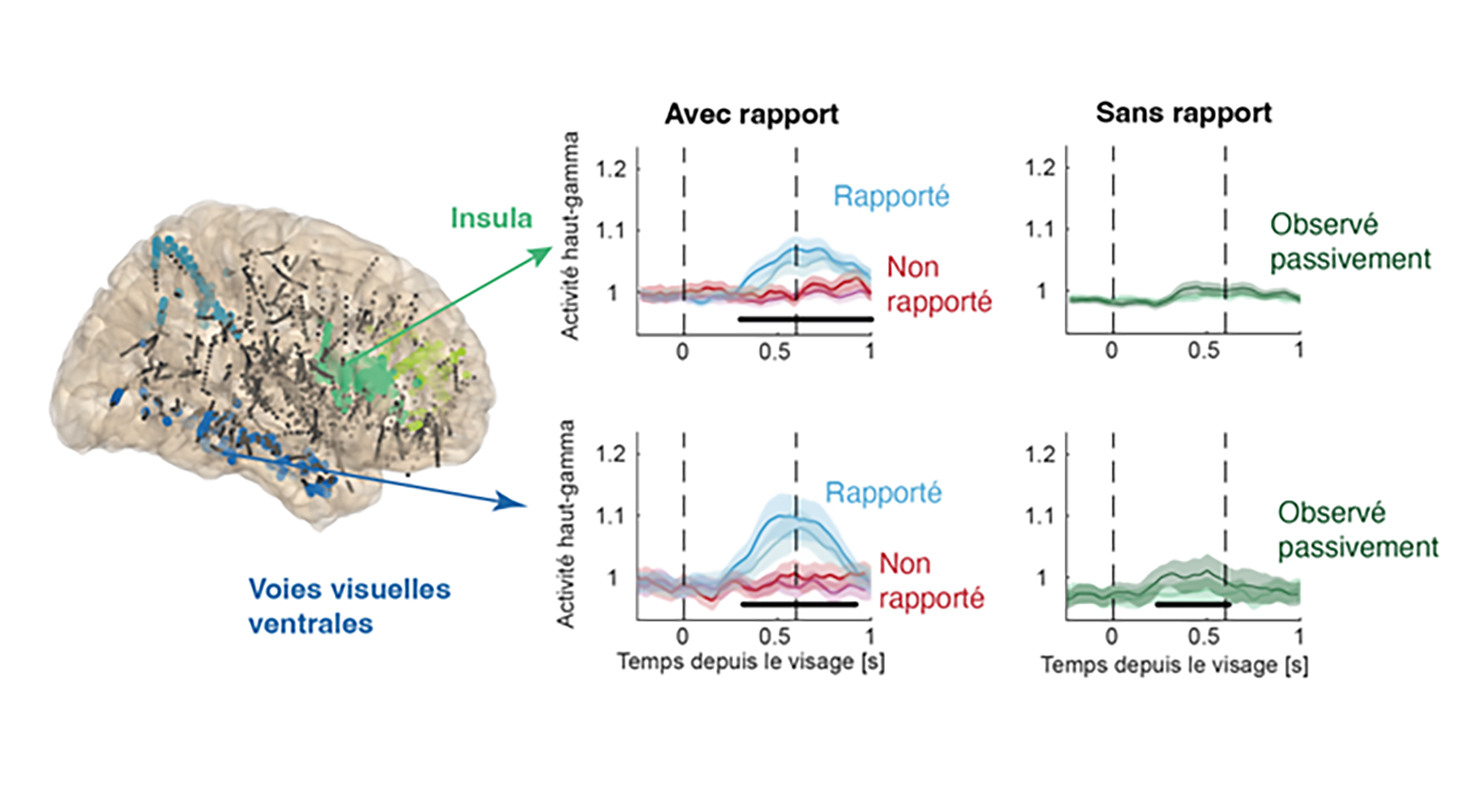- Share
- Share on Facebook
- Share on X
- Share on LinkedIn
Communiqué / Consciousness, Team M.Pereira
On October 24, 2025

An international team of researchers has recently demonstrated that our cortex accumulates the sensory information necessary for consciousness even when no response is required. These findings, published in Nature Communications, shed new light on the neural basis of perceptual consciousness.
To perceive a visual stimulus, our brain does not rely on a single sensory ‘flash’. It gradually accumulates visual cues until it reaches a response threshold: ‘yes, I saw something’.
A recent study conducted by researchers from the Psychology and Neurocognition Laboratory and the Grenoble Institute of Neuroscience reveals that this process of accumulation (called evidence accumulation) occurs even when no response is expected from the person. In other words, the brain evaluates and gradually integrates visual information even in the absence of task demands.
To reach this conclusion, researchers, including the first author François Stockart, used intracranial recordings (stereo-EEG) in 29 patients with epilepsy, hospitalised for clinical examination.
This highly accurate method made it possible to track neural activity millisecond by millisecond during the presentation of visual images in two situations: when participants had to indicate whether they saw something, and when no response was required (the “no report” condition).
The result: the same brain signatures appeared in both cases, particularly in the ventral visual pathways of the cortex.
“Activity in the ventral visual pathways of the temporal cortex appears to encode the perceptual consciousness associated with the presentation of a face, with variable dynamics. However, many questions remain to be elucidated, such as the role of the prefrontal cortex” explains Michael Pereira.
These results suggest that the brain processes and accumulates information well before we become aware of it, much like a computer that prepares a response before displaying the result. This could explain certain everyday experiences: those moments when we ‘perceive’ something without knowing exactly what it is, or those visual illusions where our brain fills in missing information. This discovery raises also the fascinating question: where is the boundary between vision, consciousness and decision-making?
Reference :
Cortical evidence accumulation for visual perception occurs irrespective of reports.
François Stockart, Ramla Msheik, Alexis Robin, Lenka Jurkovičová, Dorian Goueytes, Martin Rouy, Radek Mareček, Dominique Hoffmann, Liad Mudrik, Robert Roman, Milan Brázdil, Lorella Minotti, Philippe Kahane, Michael Pereira*, Nathan Faivre*.
Nat Commun. 2025 Sep 26;16(1):8458. doi: 10.1038/s41467-025-63255-y.
* equal contribution
Date
- Share
- Share on Facebook
- Share on X
- Share on LinkedIn